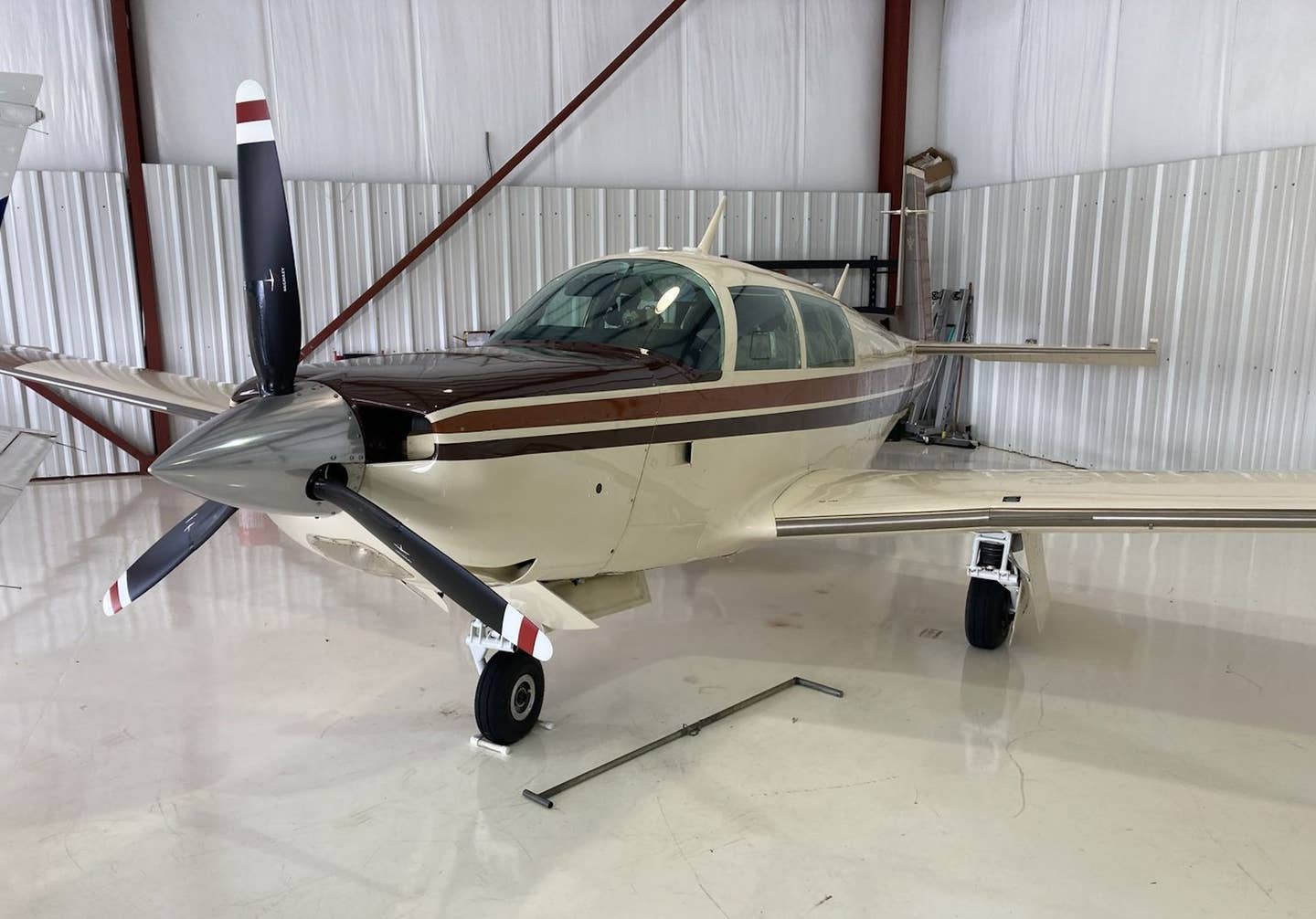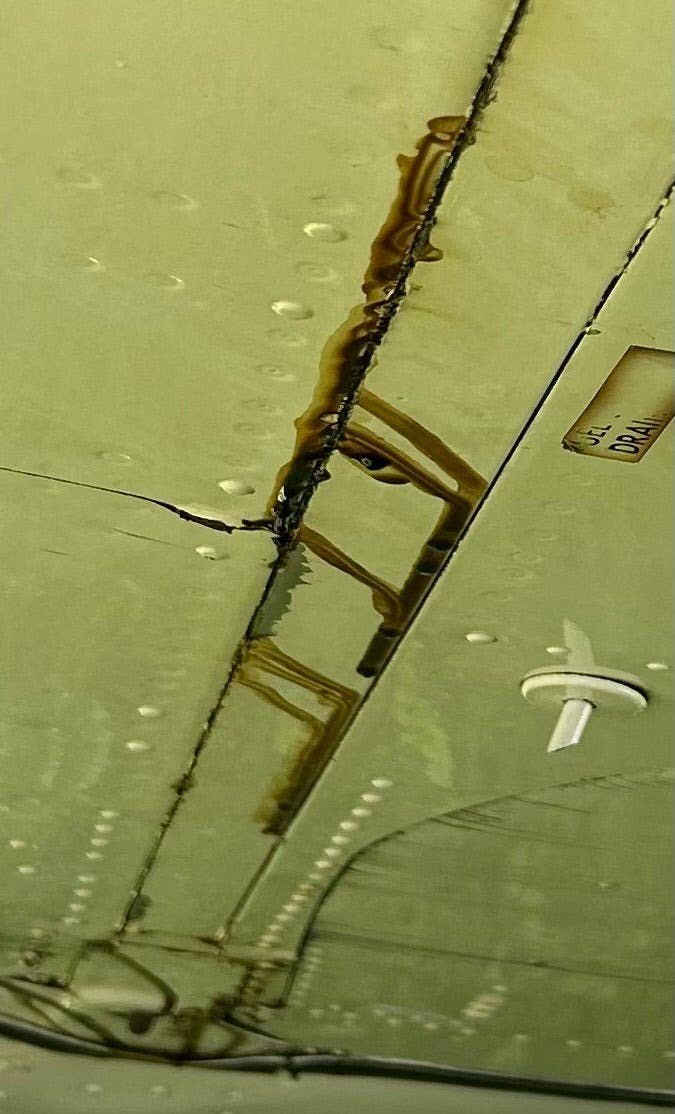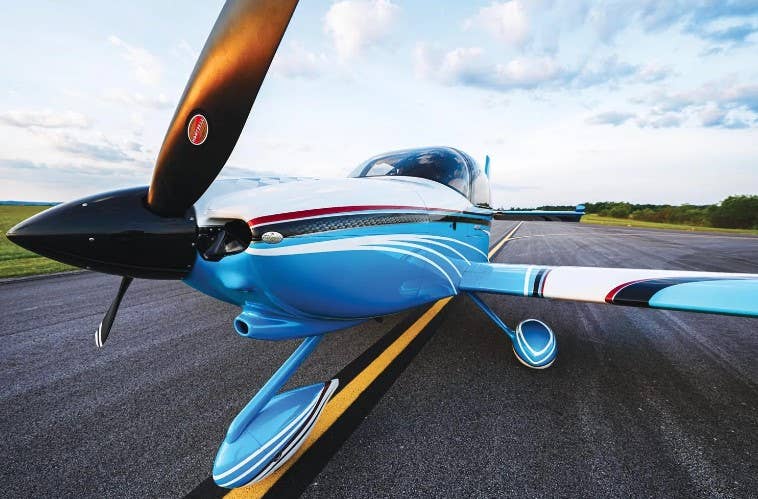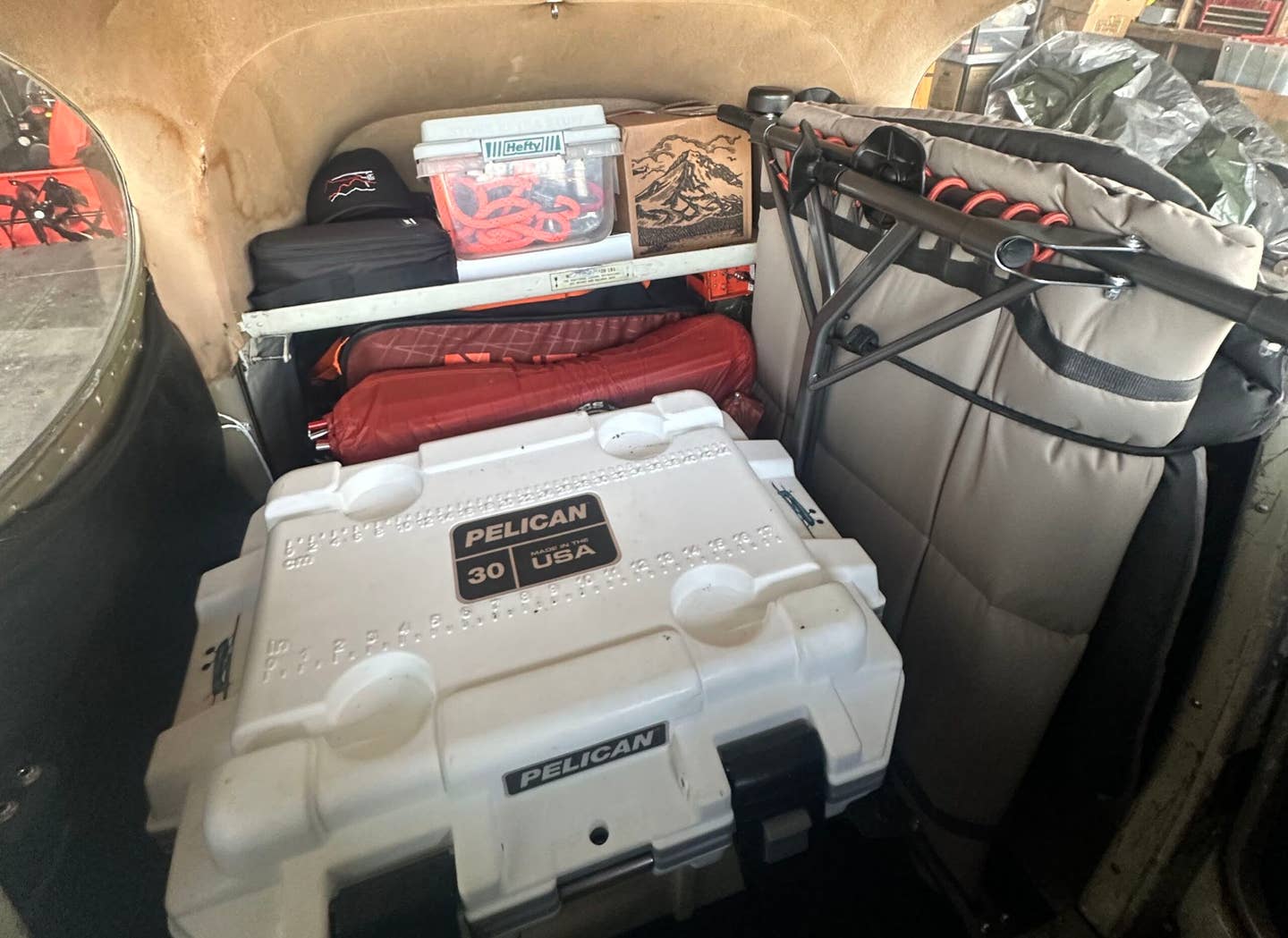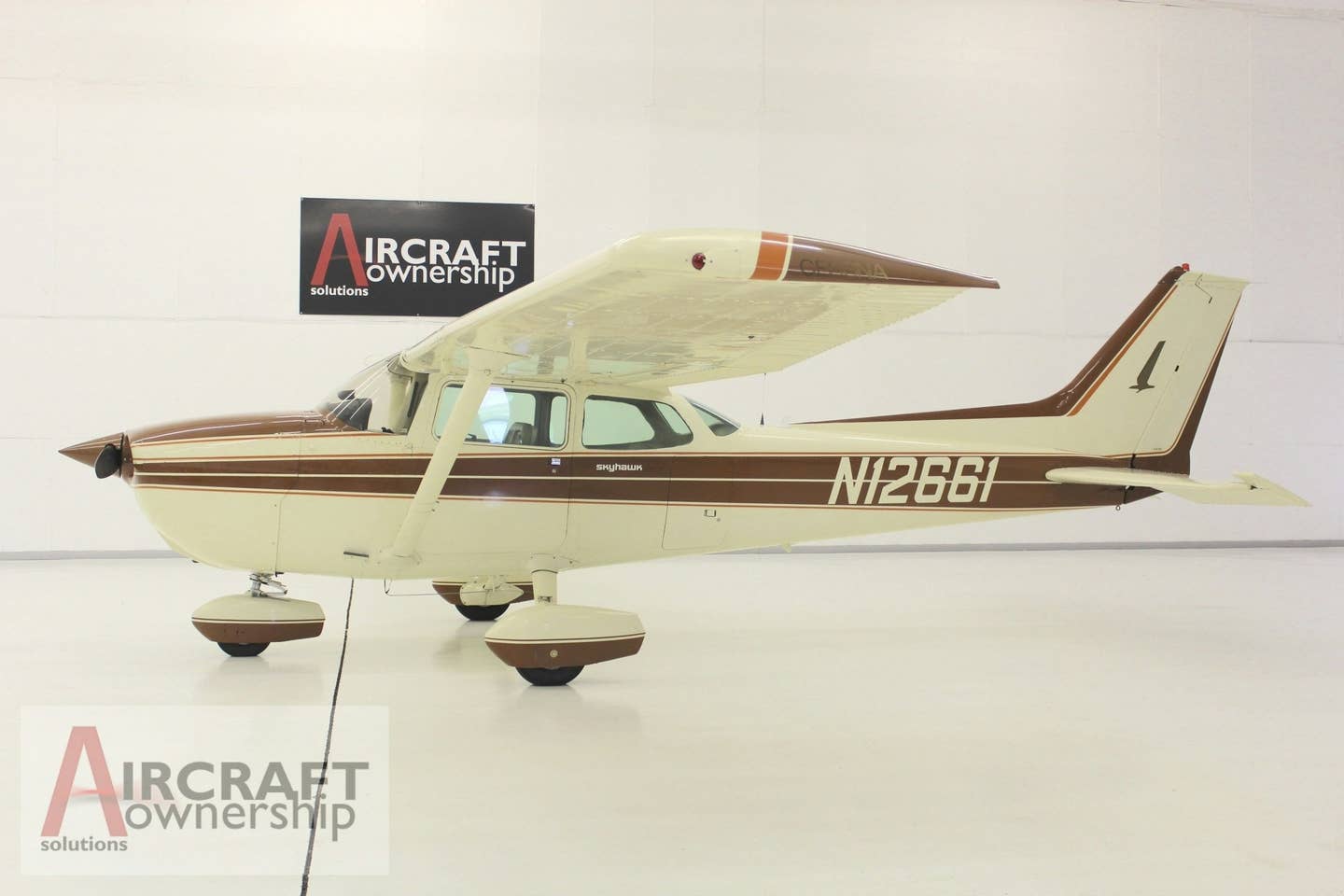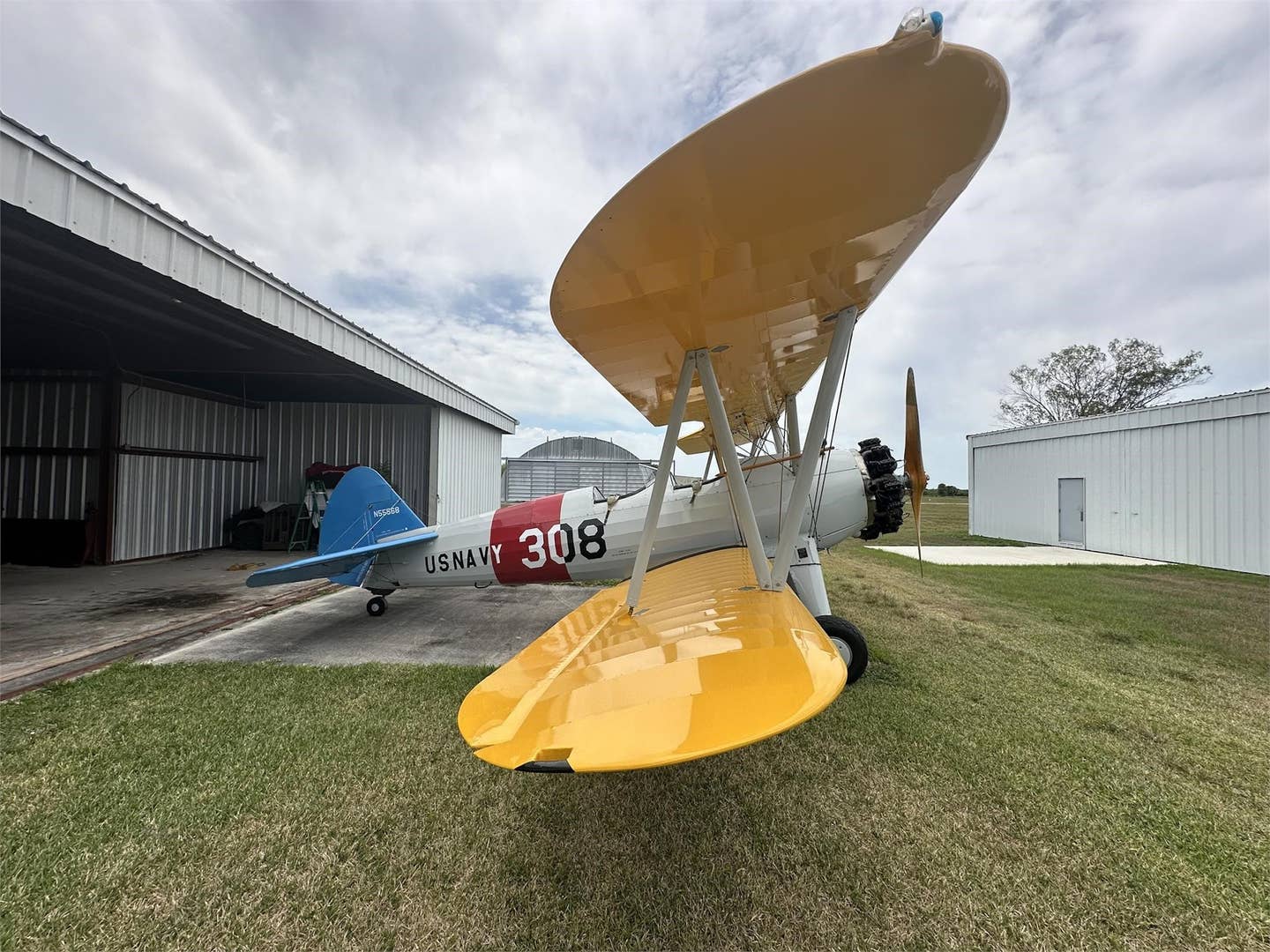Breaking Down Sudden Stoppage Inspections
Here’s what to do when a propeller strike occurs.

One horrible sound that is legendary among aviators is the unmistakable thwack of a propeller striking something substantial. [Courtesy: Richard Scarbrough]
There comes a time in most every pilot’s career when they think to themselves, “That doesn’t sound good!” Some sounds are worse than others, and more than a few are absolutely dreadful. One such sound is legendary among aviators. That is the unmistakable thwack of your propeller striking something substantial. Once heard, you enter the world of the sudden stoppage inspection. Buckle up because it will get worse before it gets better.
As many of you know, I owned and operated an aircraft engine shop for more than a decade and consistently handled sudden stoppage inspection cases. The jobs were so common that we even had T-shirts printed with the phrase, “Things get hot when the big fan stops.” Sometimes, humor can help take some of the sting away. Like the late Jimmy Buffet sang, “...if we couldn’t laugh, we would all go insane.” Aircraft ownership and maintenance will do that to you. This is why we all gather here to swap stories, support each other, and maybe learn a little something along the way.
If you're not already a subscriber, what are you waiting for? Subscribe today to get the issue as soon as it is released in either Print or Digital formats.
Subscribe NowDisclaimer: Today, we are discussing air-cooled reciprocating engines. The criteria are different based on engine type.
Defining a Propeller Strike
As with many things in aviation, the definition of propeller strike is hotly debated. The same is true of what maintenance evolution is applicable after determining if a prop strike occurred. More on that later. First, let’s determine what a propeller strike is.
The FAA sets the bar high by including a sudden stoppage question in the FAA-S-8081-28A Aviation Mechanic Powerplant Practical Test Standards. Part C on engine inspection, drawing on the references from 14 CFR Part 43; AC 43.13-1B and FAA-H-8083-32, states the objective is to determine that the applicant can demonstrate “knowledge of an inspection required after a potentially damaging event, including but not limited to any of the following: sudden stoppage, over speed, or over temperature.” Even among A&Ps, there is a wide disparity in interpreting the definition, with subsequent actions also in question.
Some A&Ps are jacks-of-all-trades, while others are highly specialized. Based on experience, I recommend dealing with specialists regarding critical components such as avionics, powerplants, and propellers.
What constitutes a propeller strike? Let’s check with the experts and see what the OEMs say.
According to Service Bulletin SB96-11B, Continental Aerospace Technologies defines a propeller strike as: “(1) any incident, whether or not the engine is operating, that requires repair to the propeller other than minor dressing of the blades as set forth in Part I, B of this Service Bulletin or (2) any incident while the engine is operating in which the propeller makes contact with any object that results in a loss of engine rpm.”
Our friends in Lycoming County, Pennsylvania, in their Service Bulletin No. 533C, define a prop strike as:
• Any incident, whether or not the engine is operating, where repair of the propeller is necessary.
• Any incident during engine operation where the propeller has an impact on a solid object. This incident includes propeller strikes against the ground. Although the propeller can continue to turn, damage to the engine can occur, possibly with progression to engine failure.
• Sudden rpm drop on impact to water, tall grass, or similar yielding medium where propeller damage does not usually occur.
How It Happens
During my engine shop days, I can say with certainty that no two sudden stoppage inspections were alike. Scratch that. We did have one client who cranked his Cessna’s engine with the nosewheel tow bar still attached to the aircraft not once, but twice. True story: The first incident occurred, and the owner dutifully called the shop for an estimate. We bid the job, won the business, and carried out the maintenance action to get the good doctor (he was an oncologist) airborne once again. Or so we thought.
Twas less than a fortnight before he rang the shop again. After installing the engine, the mechanic reconnected the baffling, linkage, and appropriate hoses, instructing the owner to crank it up—yes, with the towbar once again still attached. At least the parts bill of materials (BOM) was easy to create. In fairness, his ground support person should have alerted him that the tow bar was in place. As with most aircraft incidents, it was a breakdown of systems, communication, and practices mixed with bad luck.
- READ MORE: Servicing Cessna 172 Stuck Exhaust Valves
We also saw plenty of the traditional ways propeller strikes occur. Taildraggers are in danger of ground looping. Tricycle gear aircraft brake too hard and dip the nose or hit a depression on a grass field and catch the propeller. Once, a client called to say they approached their aircraft to do a walk-around and found shattered glass from a blue taxi light lens in the cowling during the preflight inspection. There was nothing in the logbook about this. I had one customer taxi into a hangar door and another into a second aircraft.
One of the pricier inspections we accomplished was a Piper Navajo that landed gear up. Upon tearing down the engine, we found special H5 Lycoming connecting rods. There was no way to know this during the estimate phase, and we had to tell the client that his bill had just gone up. All of this is to say propeller strikes are more common than one might think.
There is one other hazard that causes prop strike concerns for pilots—wildlife. Most everyone knows the story of Captain Sully and the “Miracle on the Hudson.” Did you also know that according to the FAA Wildlife Strike Database, about 272,000 wildlife strikes with civil aircraft were reported in the U.S. between 1990 and 2022? That is a lot of damaged aircraft.
The encounters are only sometimes birds. Some pilots report striking white-tailed deer and even elk in the northern states. The FAA launched the Wildlife Hazard Mitigation program to help counteract the effects of wildlife on airports. On the program website, the FAA states that “during the past century, wildlife-aircraft strikes have resulted in the loss of hundreds of lives worldwide, as well as billions of dollars in aircraft damage.”
Incident Confirmed—Now What?
As certified aircraft mechanics, the FAA mandates we operate with the highest degree of safety conscience, and demand the same of those we work with. An excerpt from the Mechanic's Creed states, in part, that “I shall never knowingly subject others to risks which I would not be willing to assume for myself, or for those dear to me.” In layman’s terms, we often ask ourselves, would you fly behind it? Once you qualify the occurrence as a propeller strike, what happens next? There are three distinct camps in this regard. So as not to sound inflammatory and stir emotions, let’s designate them as teams A, B, and C.
Strictly for identification purposes, let’s say Team A equals “all good, keep flying,” Team B “better do the minimum,” and Team C “conscientious.” This division stems from misconceptions about what to do after a propeller strike. The major engine manufacturers, Lycoming and Continental, are clear on the action needed in their respective service bulletins. For Lycoming applications, some have attempted to circumvent this by their interpretation of AD 2004-10-14. Team B will point to the statement: “Remove the existing gear retaining bolt and lockplate from service, and install a new bolt and lockplate, in accordance with steps 6 and 7 of Lycoming MSB No. 475C.” It believes this is the bare minimum needed. It argues that an Airworthiness Directive (AD) takes precedence over a service bulletin. However, this AD references SB475, not SB533C. Are you confused yet?
- READ MORE: Testing the Hardware After a USM Retrofit
Like every other aircraft maintenance evolution, the bottom line is comfort. Are you comfortable accomplishing the bare minimum and avoiding the messiness and expense of an engine teardown? Just know that we have found cracked crankshafts before when doing the magnetic particle inspection. When asked about potential damage on its website in an article entitled “Prop Strike: What’s Next?” Hartzell Propeller said, “Even if there’s no visible damage to the propeller, there may be hidden internal damage to the propeller, governor, crankshaft, and other components that can cause engine failure later in the engine’s life, if not immediately.” That sounds definitive to me.
A chance to perform maintenance, like that following a prop strike, is also an opportunity to find other issues. Some argue that mechanics cannot unsee issues, which will increase the repair cost. Dare I say there is no such thing as too much maintenance? I recall an instance when a Beechcraft Baron B58 operator suffered a propeller strike and contracted us to perform the inspection. The engine was a Continental IO-550-C model configured with a front-drive alternator. During disassembly, our technician noted the lock tabs of the face gear hardware were not bent, locking the bolt in place. Subsequently, this caused a crack in the crankshaft ring gear mounting flange. It scrapped the crankshaft. This customer operated a fleet of Barons, and we sent word to them to inspect the remaining aircraft.
This issue is just one example of many we found through engine maintenance. Another common squawk involves camshafts going bad. Typically caused by corrosion, the camshaft will begin to wear abnormally and spall the lifter. While the charges for the parts to repair these discrepancies fall outside the scope of maintenance for the sudden stoppage inspection, the labor is covered and, therefore, essentially free. A real bargain. Another key point I highlight to my clients: Do you want to find out about that issue in the shop or at altitude?
Tap into Knowledge
The aircraft reciprocating engine business is a tight-knit group of folks quick to help each other out. That’s what I love about this industry. This is especially important since, while most information is easily accessible, there are some things that are either not readily available or just industry tips one picks up through the years.
For example, did you know that your dry air vacuum pumps require replacement after a propeller strike? Consult Tempest Service Letter SL-008, with an opening statement that reads: “When a Tempest engine-driven air pump is subjected to sudden engine stoppage (for example, propeller strike during a gear up landing), the rotor and vanes of the pump may sustain damage. This damage may not be evident by rotating the pump or by visual examination.” What about Rapco? Same story. Refer to Service Letter RASL-003, which states: “When a Rapco Inc. pneumatic pump has been subjected or is suspected of having been subjected to sudden engine stoppage or propeller strike event, it is mandatory to replace the affected pneumatic pump before further flight, in accordance with the procedure outlined below.”
What about magnetos? Champion Slick Service Letter L-1363 states that “magnetos must be overhauled after a lightning strike on the aircraft, a sudden engine stoppage, prop strike, or immersion.” Are you picking up on the pattern yet?
Here is a fun fact: Lycoming has a surprise for the newer model engines. Earlier, we mentioned Lycoming Service Bulletin No. 533C. Reading through the SB, you will see “NOTICE: Roller tappets, counterweight rollers, and bushings must be replaced.” You read that correctly: Replacing roller tappets during a sudden stoppage inspection is mandatory.
How is someone supposed to keep all of this straight? You’re not. Aviation is a team sport. Do your homework and trust the professionals. Most engine shops are willing to go the extra mile to help you. Ensure you work with one with high standards. The rules are constantly changing. In years gone by, Lycoming allowed certain repairs for a bent propeller flange on engine crankshafts. With the publication of Service Bulletin No. 201F, this is no longer the case. The SB reads, in part: “Lycoming Engines no longer allows bent crankshaft flanges to be ground or repaired to restore maximum run-out. As per Service Bulletin 533B, if the crankshaft is bent, it must be replaced.” A good shop will help you decipher this.
Hidden Problems
I wanted a firsthand account of the “to tear down or not tear down, that is the question” debate, so I checked in with JD Kuti from Pinnacle Aircraft Engines in Silverhill, Alabama. When asked if his team ever found issues during teardown after a propeller strike, Kuti responded with a resounding: Absolutely!
Here are the common issues discovered:
• Crankshaft flange bent
• Crankshaft cracked at flange or slinger ring
• Crankcase cracked
• Gear teeth cracks
This feature first appeared in the April 2024/Issue 947 of FLYING’s print edition.

Subscribe to Our Newsletter
Get the latest FLYING stories delivered directly to your inbox


